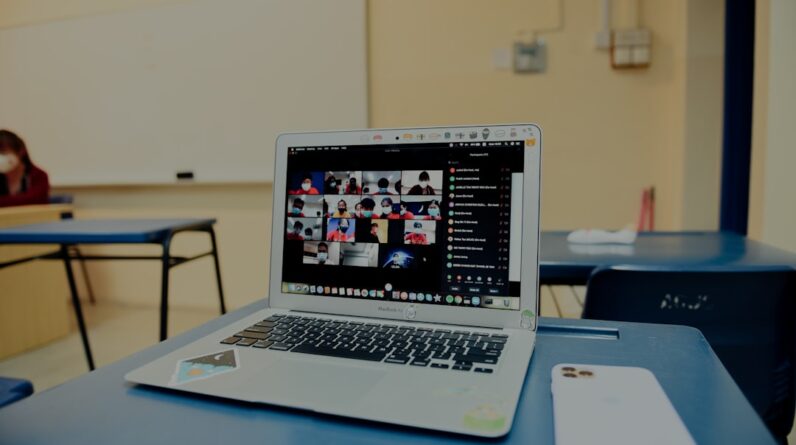
To truly master a language, immersion is key. You can create an environment where Spanish is the primary language, even if you are not in a Spanish-speaking country. Start by changing the language settings on your devices to Spanish.
This simple act can significantly enhance your vocabulary and comprehension skills as you navigate through your daily tasks. Additionally, consider labeling items around your home with their Spanish names. For instance, stick a note on the refrigerator that says “refrigerador” or on the door that reads “puerta.” This constant exposure will help reinforce your learning and make the language feel more familiar.
Another effective way to immerse yourself is by engaging with Spanish-speaking communities, whether online or in person. Join local cultural clubs or attend events where Spanish is spoken. You might find a salsa dancing class or a cooking workshop that focuses on traditional Spanish cuisine.
These activities not only provide a fun way to learn but also allow you to practice your language skills in real-life situations. The more you surround yourself with the language, the more natural it will become, and soon you’ll find yourself thinking in Spanish.
Key Takeaways
- Surround yourself with Spanish by listening to Spanish music, watching Spanish TV shows and movies, and reading Spanish books and articles.
- Set specific goals and a timeline for your Spanish learning journey to keep yourself motivated and on track.
- Utilize language learning apps and websites such as Duolingo, Babbel, and Rosetta Stone to practice and improve your Spanish skills.
- Practice speaking with native Spanish speakers to improve your pronunciation and conversational skills.
- Use flashcards to build your Spanish vocabulary and make it a habit to review them regularly.
Set Specific Goals and a Timeline
Setting specific goals is crucial for your language-learning journey. Instead of vague aspirations like “I want to learn Spanish,” aim for concrete objectives such as “I want to hold a 10-minute conversation in Spanish within three months.” By defining clear targets, you can measure your progress and stay motivated. Break down your goals into smaller, manageable tasks.
For example, you might decide to learn 20 new vocabulary words each week or practice speaking for 30 minutes every day. This structured approach will help you stay focused and make your learning experience more rewarding. Creating a timeline for your goals can also enhance your commitment.
Establish deadlines for each milestone you set, whether it’s mastering basic conversational phrases or being able to read a short story in Spanish. Having a timeline not only keeps you accountable but also allows you to celebrate your achievements along the way. As you reach each goal, take a moment to reflect on how far you’ve come and adjust your future objectives based on your progress.
This continuous cycle of setting, achieving, and reassessing will keep your motivation high and your learning on track.
Utilize Language Learning Apps and Websites
In today’s digital age, language learning apps and websites are invaluable resources that can complement your studies. Platforms like Duolingo, Babbel, and Rosetta Stone offer interactive lessons that cater to various learning styles. You can practice vocabulary, grammar, and pronunciation at your own pace, making it easy to fit language learning into your busy schedule.
These apps often incorporate gamification elements, turning learning into a fun and engaging experience. You might find yourself competing against friends or earning rewards for completing lessons, which can further motivate you to stay consistent. Moreover, many websites provide free resources such as podcasts, videos, and articles tailored for Spanish learners.
Websites like FluentU and SpanishDict offer immersive content that helps you understand the language in context. You can watch videos with subtitles or listen to native speakers discussing various topics, which enhances both your listening skills and cultural understanding. By utilizing these digital tools, you can create a well-rounded learning experience that keeps you engaged and excited about mastering Spanish.
Practice Speaking with Native Speakers
One of the most effective ways to improve your Spanish is by practicing speaking with native speakers. Engaging in conversation allows you to apply what you’ve learned in real-time and gain confidence in your abilities. You can find language exchange partners through platforms like Tandem or HelloTalk, where you can connect with native Spanish speakers who want to learn your language.
This reciprocal arrangement not only helps you practice speaking but also provides insight into cultural nuances that textbooks often overlook. If you’re looking for more structured practice, consider joining local conversation groups or attending language meetups in your area. These gatherings create a relaxed environment where you can converse with others who are also learning Spanish.
Don’t be afraid to make mistakes; they are an essential part of the learning process. The more you speak, the more comfortable you’ll become with the language, and soon you’ll find yourself engaging in conversations without hesitation.
Use Flashcards for Vocabulary Building
Flashcards are a time-tested method for building vocabulary effectively. You can create your own flashcards with words or phrases on one side and their meanings or translations on the other. This hands-on approach allows you to actively engage with the material rather than passively reading it.
Consider using color-coded cards for different categories, such as food, travel, or emotions, which can help organize your learning and make it easier to recall information. In addition to traditional flashcards, there are numerous apps available that offer digital flashcard options, such as Anki or Quizlet. These platforms often include spaced repetition algorithms that optimize your study sessions by focusing on words you struggle with most.
By regularly reviewing your flashcards, you’ll reinforce your memory and expand your vocabulary over time. Incorporating this technique into your daily routine can significantly enhance your language skills and prepare you for more complex conversations.
Immerse Yourself in Spanish Media
Consuming Spanish media is an enjoyable way to enhance your language skills while also gaining cultural insights. Start by watching Spanish-language films or television shows with subtitles in either English or Spanish. This dual exposure helps improve your listening comprehension while allowing you to see how words are used in context.
As you become more comfortable, challenge yourself by watching without subtitles or switching to only Spanish audio. Reading books, newspapers, or blogs in Spanish is another excellent way to immerse yourself in the language. Choose materials that interest you—whether it’s fiction, non-fiction, or even comic books—to keep yourself engaged.
As you read, take note of new vocabulary and phrases that catch your attention. You might even consider keeping a journal where you summarize what you’ve read in Spanish; this practice will reinforce both your writing skills and comprehension.
Take Intensive Language Courses
If you’re serious about accelerating your Spanish learning journey, consider enrolling in an intensive language course. These programs often provide immersive experiences that allow you to focus solely on the language for an extended period. Whether it’s a summer course abroad or a weekend workshop in your city, intensive courses typically offer structured lessons that cover grammar, vocabulary, and conversation skills comprehensively.
In addition to classroom instruction, many intensive courses include cultural activities that enhance your understanding of the language’s context. You might participate in cooking classes, dance lessons, or guided tours—all conducted in Spanish—allowing you to practice what you’ve learned in real-world situations. The combination of focused study and cultural immersion can lead to rapid progress and a deeper appreciation for the language.
Find a Language Exchange Partner
Finding a language exchange partner can be one of the most rewarding aspects of learning Spanish. This arrangement allows you to practice speaking with someone who is fluent in the language while helping them learn yours in return. You can meet regularly—either in person or virtually—to engage in conversations that benefit both parties.
This reciprocal learning experience not only improves your speaking skills but also fosters friendships across cultures. When searching for a language exchange partner, consider using social media platforms or dedicated websites like Meetup or ConversationExchange.com. Be clear about your goals and what you’re hoping to achieve from the partnership so that both of you can benefit equally from the experience.
As you converse, don’t hesitate to ask questions about pronunciation or cultural references; this dialogue will enrich your understanding of the language and its nuances.
Incorporate Spanish into Daily Activities
Integrating Spanish into your daily activities can significantly enhance your learning experience without requiring extra time out of your day. For instance, try following recipes written in Spanish when cooking or listening to Spanish music while commuting. This seamless integration allows you to practice the language naturally while engaging in activities you already enjoy.
You might also consider setting aside specific times during the day dedicated solely to practicing Spanish—whether it’s during breakfast when reading news articles or before bed when reviewing vocabulary flashcards. By making these small adjustments to your routine, you’ll find that learning becomes less of a chore and more of an enjoyable part of your everyday life.
Learn Basic Grammar and Sentence Structure
While vocabulary is essential for communication, understanding basic grammar and sentence structure is equally important for fluency. Start by familiarizing yourself with fundamental concepts such as verb conjugations, noun-adjective agreement, and common sentence patterns. Resources like grammar workbooks or online courses can provide structured lessons that break down these concepts into digestible parts.
As you learn grammar rules, practice applying them through writing exercises or speaking drills. For example, try constructing sentences using new vocabulary words while adhering to grammatical rules you’ve studied. This active engagement will help solidify your understanding and enable you to communicate more effectively as you progress in your studies.
Stay Committed and Consistent in Your Learning
Finally, commitment and consistency are vital components of successful language learning. Establishing a regular study schedule will help reinforce what you’ve learned while keeping the momentum going. Even if it’s just 15-30 minutes each day dedicated to practicing Spanish—whether through apps, conversation practice, or media consumption—this consistency will yield significant results over time.
Remember that language learning is a marathon, not a sprint; there will be ups and downs along the way. Celebrate small victories and don’t be discouraged by setbacks; they are part of the process. By maintaining a positive attitude and staying committed to your goals, you’ll find yourself making steady progress toward fluency in Spanish—and enjoying every step of the journey along the way.
If you are looking to learn Spanish quickly, you may also be interested in understanding the benefits of learning idiomatic expressions and colloquialisms when expanding your vocabulary in a new language. This article on the benefits of learning idiomatic expressions and colloquialisms explores how these unique phrases can help you better understand and communicate in Spanish. By incorporating these expressions into your language learning journey, you can enhance your fluency and cultural understanding.
FAQs
What are some effective strategies for learning Spanish quickly?
Some effective strategies for learning Spanish quickly include immersing yourself in the language by watching Spanish TV shows and movies, practicing speaking with native speakers, using language learning apps and resources, and setting specific, achievable goals for your language learning journey.
Is it possible to learn Spanish fast?
Yes, it is possible to learn Spanish quickly with the right strategies and dedication. Immersion, consistent practice, and using effective language learning resources can help accelerate the learning process.
How long does it take to learn Spanish fluently?
The time it takes to learn Spanish fluently can vary depending on factors such as the individual’s language learning abilities, the amount of time dedicated to practice, and the level of immersion in the language. Some people may achieve fluency in a few months, while others may take a year or more.
What are some common pitfalls to avoid when trying to learn Spanish fast?
Common pitfalls to avoid when trying to learn Spanish quickly include focusing too much on grammar rules, neglecting speaking practice, and becoming discouraged by mistakes. It’s important to stay motivated, practice regularly, and seek out opportunities for real-life language use.
Are there any specific resources or tools that can help with learning Spanish fast?
Yes, there are many resources and tools that can aid in learning Spanish quickly, such as language learning apps like Duolingo and Babbel, online courses, language exchange programs, and immersion experiences. It’s important to find the resources that work best for your learning style and goals.





